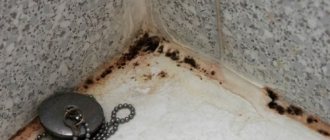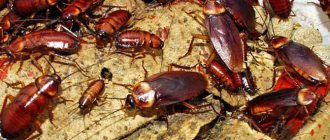How to get rid of birds on the roof of a house and balcony?
Birds can inspire admiration with their luxurious plumage, touch you with their chirps or delight you with their vibrant trills, but if they occupy your home, you will understand how unpleasant these feathered neighbors are. Residents of old private houses are waging an irreconcilable war with pigeons, sparrows or swallows, freely located under the roof. These uninvited attic residents cause a lot of inconvenience, so only an avid ornithologist can put up with such a neighborhood. In this article we will tell you how to get rid of pigeons on your roof, as well as what to do to keep birds away from your house.
Passive methods: restriction and protection from birds
Almost all active methods of protecting birds are either expensive, or look ridiculous on the roof, or interfere with people’s lives too. Therefore, if your problem is one or two frequent birds, try to get by with small expenses and crafts from improvised means.
It’s simple: in total, all birds always choose places for themselves not only to live, but also to breed their offspring there. Therefore, the more difficulties you create for them, the less they will want to fly to you.
Wire and mesh over the roof
First of all, try to prevent the birds from simply landing on the roof. To do this, as an option, a fishing line or wire is pulled at a height of 5 cm from the surface of the roofing, and this provides good protection for the roof from birds. In addition, it is quite difficult for birds to stay on such thin threads.
Sometimes voluminous bird protection nets are needed for the roof of a house, with large or small cells, made of plastic or metal. But they often do not look entirely aesthetically pleasing. Although sometimes there is no other way out, and such obstacles do not always have to hang constantly.
The installation principle of this material is simple: a special bird protection net is stretched directly over the roof and secured to special posts.
Anti-seize spikes
These are point devices that allow you to completely solve the problem of getting rid of birds on the roof - namely on the ridge and eaves. Today, special tapes with spikes on a metal or polymer base are sold. They are invisible on the roof, and it is safe for the birds themselves. When they fly up to the roof, they will see the spikes and simply will not sit on them.
This bird protection device consists of sections, usually 25 cm long, and on each of them, pieces of metal wire in the shape of the letter V are located in two rows:
These devices are fixed to the cornice and ridge using self-tapping screws or special glue. However, for such an installation you need to have experience working at heights. If you feel unsure even on a stepladder, then the installation of spikes can be ordered from specialized companies.
Due to the fact that the base of the spikes is made of flexible plastic, such an element can be mounted on any surface. These devices do not need to be plugged into an outlet, and the plastic base is usually transparent enough to be invisible on the surface of the roof and not spoil its appearance.
Also, anti-spike spikes are durable, withstand exposure to open atmosphere, and are not afraid of temperature changes, rain or snow. Both plastic and steel needles last at least 3 years:
Optical gel with oils
The next type of bird repeller is gel. It is also called optical. This liquid is made from completely natural ingredients that do not harm either the environment or the birds themselves:
The optical gel is based on an oil-based composite base that is resistant enough to wind, snow or rain. Oils, due to their special structure, create a thin impermeable film that allows the composition not to evaporate in the heat. Such repellers are successfully used in conditions of heavy rainfall and 30-degree frosts.
Ventilation outlet protection
In addition to the roof surface itself, birds love to enter the attic space through eaves, valleys, dormer windows and ridges. Therefore, it is important to carefully close all the openings, install blinds on the dormer windows, hem the overhang of the cornice and close the vents with grilles. And for eaves today, a special roofing mesh against insects and birds with a fine-mesh structure is sold. It is also called ventilation tape, and it is good because it provides reliable protection for the roof, but does not interfere with air flow in the under-roof space.
But a lot depends on the material used. Thus, a plastic bird net for roofing is similar to perforated tape and is also used to get rid of insects, but is limited in width - only 7 cm:
Bird netting for roofing made of stainless steel, with small cells of 2-3 mm, is considered more practical. For ridges and junctions, it is better to take material 15-25 cm wide. Professional bird netting for roofing is also sold: it will not be difficult to buy one at any building materials store. But for curtain rods you need to take a roll at least a meter wide. This is fixed using self-tapping screws with a press washer or nails with a wide head.
Stainless steel bird netting for roofing is more durable and not subject to corrosion, but will cost more than plastic netting. And steel is not at all suitable for such tasks, since after some time it will begin to rust and rot, leaving unsightly streaks on the walls of the house.
Another option is to cover the eaves overhangs with painting mesh, especially where there are small gaps. It is laid overlapping and attached to the wooden elements of the roof. As a budget option, it is also suitable for air skates. The truth does not last long, and the birds themselves manage to tear it. By the way, ventilation elements for ridges and overhangs are good not only as a passive repellent for birds, but also as a barrier to such unpleasant insects as hornets or wasps. They also like to organize a nest for themselves and breed offspring in a dry, warm hiding place.
A good alternative to eaves mesh is a special comb for eaves overhangs:
Modern soffit made of metal or plastic will also help protect the cornices. This is an element of the roofing system that represents a whole system of slats and covers the lower part of the roof, giving it a finished look. It looks much more solid than mesh and has a variety of materials and designs. It also allows you to mount lighting inside, which is especially convenient:
Rustle and glare near the roof
Sometimes special silver ribbons are used for the roof, which rustle in the wind and shimmer brightly in the sun. They scare birds with their rustle and shine, but they only work effectively in sunny weather. But during periods of cloudiness and rain, they are of little use.
In addition, only forest birds, small field birds, starlings and thrushes do not like such “decorations”. But pigeons, crows, sparrows and rooks do not react to them at all. Also good in this regard is a special pinwheel for scaring away birds, or its budget version - a craft made from a plastic bottle. It is cut out in the center and the blades are bent. It turns out to be a good craft, with foil ribbons glued to the blades and mounted on a wooden stick.
Under the influence of the wind, the turntable rotates and a good roof protection against birds comes out from scrap materials. Especially if the problem is not acute.
Balls with eyes among the foliage
Another popular approach is to play with the birds. For every animal there is always an even more dangerous one, and often from its own species - this is what the laws of nature say. And birds have their enemies, also among the birds. This is a kite, a hawk, an owl. But it doesn’t have to be about him, it’s enough just to imitate his presence. For example, hang three-dimensional 3D images on a tree near the roof. We are talking about vinyl balls of different colors and patterns that imitate the eyes of predators. Such toys are especially popular in the USA and Europe, where they like to hang gardens and areas around the house with them.
But this is not exactly protection specifically for the roof - rather for the garden and its fruits, but it helps to repel “guests” from the entire site with the house in addition. Additionally, for a special effect, eyeballs are hung near the speakers, from where the cries of birds of prey are heard.
Figures on the corners of the roof
Another way is to make or buy a model of a feathered predator and install it in the right places on the roof. These should be life-size figurines of a hawk, owl or eagle owl. Birds see such silhouettes even from the height of their flight. By the way, summer residents often make models themselves, for example, from polystyrene foam or wood, at the same time devoting their souls to pleasant creativity:
But, as practice shows, this method is the least effective of all existing ones. Even timid tits quickly realize that the enemy is not real and happily sit on these stuffed animals’ heads. The whole problem is that the layouts are motionless, and therefore do not scare anyone away.
Surprised? Yes, the range of sensory perception of a bird is not similar to that of a human, but birds also have intelligence, and therefore they are not so easy to deceive!
But how to get rid of birds under the roof of a house if passive methods do not help? Okay, two or three birds who for some reason like to visit you, but sometimes you have to deal with a whole flock. Then, as an option, sometimes they even call a special ornithological service to rid the roof of birds. But constantly using its services is expensive. Therefore, try something more effective than trying to block access to the roof.
Dangers of being close to birds
Pigeons, sparrows, swallows, jackdaws and wagtails are uninvited guests who voluntarily settle under the roof of a house or in the attic. At first, homeowners may even enjoy the cheerful fuss of the chicks around the nest and their cheerful chirping, but do not forget that birds are carriers of a large number of diseases and cause unsanitary conditions. Living literally under the same roof with birds carries with it the following dangers:
- Noise . Birds are very active people, so they do not sit still, but constantly go about their important business, loudly clicking their claws on the metal roof and flapping their wings.
- Unsanitary conditions . Pigeons often suffer serious diseases such as tuberculosis and psittacosis. In addition, their droppings contain equally dangerous viruses, fungi and infections.
- Dirt . As a result of the activity of birds, a lot of garbage is generated. In addition to feathers, fluff, and droppings that accumulate in the habitats of birds, small debris accumulates in attics and roofs, which they drag in to build nests.
Note! Birds often arrange their nests in such a way that they interfere with the ventilation of the roof of the house, complicating air circulation, as a result of which the thermal insulation material and rafter frame quickly become unusable.
How to fight
Mischievous sparrows love to peck or knock down berries from trees. This is not bad - they just get their own food. But not every owner is happy to have such a “freeloader” in his own garden. To humanely drive away birds, the following methods are used:
- Reflective and sparkling items.
- The ringing of bells.
- Ultrasound.
You can use old CDs as reflective and shiny objects. For example, hang them on tree branches or on water drains from the roof. Foil paper will also work. The main thing is that the sparkling objects should be exposed to the sun's rays. Of course, this option does not work in cloudy weather.
You can hang bells around the yard that ring in the wind. Some birds are frightened by their ringing. Resourceful owners attach pieces of foil to the bell - due to its swaying, it rings, and at the same time glare is created.
Ultrasound is considered one of the reliable options. It produces frequencies that are inaudible to humans and also do not harm other animals. Only birds perceive them. For them, this sound is not pleasant, perceived as danger. The sparrows will hasten to leave the territory.
Using these simple methods, you can remove birds from the site. Well, or at least make it not attractive to them. But if they have already settled under the roof of the house, most likely there are already nests there and there are chicks. Find out what to do next.
Ways to fight
Residents of the upper floors know that the constant noise made by their feathered neighbors can torment even the most patient person. When small birds colonize an attic space, a large amount of droppings, feathers, dust and debris accumulate, making it almost impossible to enter there.
In addition, the danger of contracting a dangerous disease exists even when inhaling dust particles that contain microparticles of pigeon droppings. Bird control measures are divided into the following types:
- Precautionary . These measures involve a set of actions aimed at making the roof structure unattractive to birds. To do this, when designing a structure, it is necessary to avoid protrusions or niches that could become a convenient place for nesting.
- Repellent . These measures are aimed at creating conditions that will scare birds away from human homes. To make the roof of a house unattractive to birds, sound or light effects and anti-landing devices are used that make it difficult to land on the roof slopes.
- Fighter . These measures include the destruction of birds and their nests by physical or chemical methods. They are the most inhumane and cruel method of getting rid of birds, so they are used extremely rarely.
Important! When deciding how to get rid of pigeons on the roof of a balcony, you need to familiarize yourself with the Law “On Environmental Protection”, which states that the destruction of birds and their nests in their natural habitat is an administrative offense. Although pigeons and sparrows are not listed in the Red Book, they are also part of our ecosystem, so it is necessary to make their eviction from the roof as humane as possible.
Method one: garden scarecrow
A set of the following materials will help you make a reliable watchman with your own hands: cotton wool, pillows, old clothes, straw, thick wooden sticks, tape, nails and a hammer. Connect the sticks crosswise and secure them with nails. Wrap the crosspiece with tape. Make a head out of a pillow, put grandpa's old hat on it and put it on a stick. For the body, take another pillow or straw, a jacket and pants. Your Scarecrow is ready.
The motionless guard itself does not frighten the birds very much, so enhance the effect with rags, bells, rattles, and tin cans fluttering in the wind. Another option for a stuffed animal is a large blue bird, which can be sewn from plain pieces of fabric and decorated with real feathers and foil.
Another original option that will help 100%
It is necessary to make a stuffed animal from two round pieces of foam, glue on huge bright eyes, make wings as in the diagram, and hang it on a high pole above fruit trees and bushes. It will sway in the wind and float, but no one will touch your berries. You can make several of them.
Repellent methods
Since destroying bird nests is prohibited by law, it is necessary to scare them away from your home before nesting begins. You can make the attic unattractive to feathered inhabitants using light and sound effects, which they will mistake for signs of danger.
The most humane and effective methods of scaring birds away from the roof are:
- Anti-seize devices . These devices are strips with long, thin spikes attached to surfaces that are most often favored by birds. The spikes do not cause them any harm, but do not allow them to land comfortably.
Many homeowners and residents of upper floors are wondering how to get rid of sparrows on their own without causing them harm. This problem has an obvious answer - you just need to get a cat, which with its very appearance will scare away the feathered inhabitants to a safe distance without the use of special devices.
How to scare birds away from your property with thorns?
All birds, before finding a suitable site for themselves, first arrange familiarization trips. To make your garden seem like an unattractive source of food to feathered pests, you should install prickly thorns on the eaves and fence.
As a result, the birds simply will not have free space to land and look around. Therefore, they will begin to fly around such an area. Plastic spikes are suitable for scaring away different types of small birds.
They can be purchased at a garden store. The kit also includes glue to which the spikes are attached anywhere. There are also metal options, but they are more powerful and suitable for large birds - for example, pigeons, crows, etc.
How to evict birds from under your roof
Birds are wonderful creatures, forest orderlies who rid plants of all kinds of insects. But in addition to benefits, they can also cause harm. When the population of birds near human habitation increases sharply, they can pose a danger to humans. We will tell you what kind of inconvenience birds living in the attic of a house cause, and we will give effective methods of dealing with such neighbors.
Bioacoustic repellent
Bioacoustics works on a similar principle to the models described above, but is more effective - it acts in a targeted manner. There is an imitation of the roar or howl of the predator that local birds are afraid of.
Tornado OP.01
Model with 220 V power supply, connects to the network using the adapter included in the kit. The device can also be powered by a rechargeable battery, but it must be purchased separately.
There are 7 operating modes, which are set depending on what pest you need to get rid of. There is also a universal operating mode.
Disadvantage: when turned on, it causes great inconvenience to neighbors, since the device makes quite loud sounds.
Weitech WK-0108
The bird scarer works in an area of no more than 400 square meters. m. The entire structure consists of a control unit and a speaker necessary to enhance the sound effect. The device operates in two modes - when a motion sensor is triggered or continuously.
What kind of inconvenience do birds cause?
Residents of the upper floors of old houses are constantly at war with birds that jump on the roof and nest in the attic. If in the first case the problem is the rumbling noise, the singing of birds and droppings that pollute the roof, then in the second it is much more serious. In addition to the constant rustling and chirping, when setting up their nests under the roof of a house, birds raise a lot of dust, which can negatively affect human health. In addition, birds are often carriers of infectious diseases, because their excrement may contain various fungi and bacteria that are extremely dangerous for us. Thus, pathogens of diseases such as torulosis, psittacosis and others often live in pigeon droppings. All of them are transmitted by airborne droplets.
If birds make their nests under the roof itself, this can impair ventilation, which will lead to premature failure of roof structural elements. For example, the insulation layer must be well ventilated, otherwise moisture will form on it, which contributes to the destruction of the material.
In general, where people live, there is no place for forest dwellers. Therefore, such neighbors should be expelled immediately.
Defacing a bird's nest
This is not the most humane, but quite effective way. If feathered pests have managed to settle on the site and have made nests, all of the methods listed above may be ineffective. And to save the harvest, you will have to start destroying bird nests.
To avoid this unpleasant activity, you need to try not to bring the situation to such a state. To do this, it is necessary to close all existing cracks under the roof. You should not allow pigeons and sparrows near your house, eliminate all niches where they can build nests for themselves.
Methods of disposal
First of all, you need to understand that the fight against birds should not be aimed at their extermination. The key action here is to scare away the birds. Nests can be eliminated only if the animals pose a true threat to human life or property. However, before removing a nest, it is mandatory to obtain appropriate permission from the Department of the Environment. The fact is that, according to the Law “On Environmental Protection”, the deliberate destruction of bird homes located in their natural habitat is strictly prohibited.
If you have made sure that the birds have not yet managed to establish themselves above your head, but still periodically make unpleasant visits, you need to take care that the birds do not begin their next construction. Let's look at the most effective means and methods that will help keep these visitors away from your home.
Method two: imitation attack
1
. Birds are afraid not only of dogs and cats, but also of their predatory relatives - falcons, hawks, owls. If your budget allows, purchase one of the modern bio-acoustic repellers that imitate the cry of birds of prey. Devices such as Birdchaser easily cope with their task and scare away winged thieves. Bioacoustic devices can imitate alarming bird calls that warn of danger.
2
. Birds also do not like other loud sounds - for example, those made by gas guns. The frequency of shots is selected using an electronic control panel. If you decide to install such a cannon, then keep the purchase in an area free of vegetation - close to the place where the birds fly. A gas cannon will drive away all birds within a kilometer radius.
3
. Ultrasonic repellers help cope with raids. Their weapon: high-frequency radiation, not dangerous to people, but annoying to birds.
Approximate prices:
-ultrasonic repeller - from RUB 1,850; - thunder gun - 18,200 rubles; -bioacoustic repeller - from 30 thousand rubles.
Danger and inconvenience for humans from sparrows
Do not underestimate the harm caused by sparrows living under the roof of a house. The first to feel the inconvenience in a multi-storey building are the residents of the top floors. The war with the sparrows under the roof never stops. Sparrows build nests in the attic, jump on the roof and cause a lot of noise. And if you can somehow cope with the noise and rumble, then the droppings pose a real danger. Firstly, it contains fungi and bacteria that provoke the occurrence of infectious diseases transmitted by air (torulosis, psittacosis, etc.). Secondly, sparrow droppings not only make the roof and wall unpresentable, but also destroy building materials.
Note! It’s really hard for allergy sufferers, because sparrows raise dust when they build a nest under the roof. Therefore, such neighbors near the window are extremely undesirable.
By making their nests under the roof, sparrows impair the natural ventilation of the roof. As a result, elements of the roof structure will fail. And making premature repairs and wasting money because of birds is not very pleasant. Ventilation is especially necessary for insulated roofs. Without it, moisture accumulates on the material and it loses its properties.
This is why it is so important to learn about techniques for getting rid of sparrows under your roof. We will consider the following methods of fighting sparrows:
- Use of anti-seize spikes.
- Visual methods for scaring away sparrows.
- Buying a pet.
- Use of reflective items.
- Humane sound devices.
- Eliminating potential nest sites for sparrows.
Important! The fight against sparrows does not carry with it the goal of exterminating birds.
The main task is to scare them away and not allow them to nest under the roof. Elimination of nests is carried out only when people are in real danger, be it infection or allergic reactions. There is a law “On Environmental Protection”, which states that the deliberate destruction of bird nests in their habitat is strictly prohibited.
Method five: raid the nests
If birds settle in your country house and make nests under the roof, then it will become difficult to fight them using the methods listed here. Your assistant in driving out birds is prevention. Don't let pigeons and sparrows into the secluded places they like so much, carefully check the attic, shed, roof and close any niches and cracks you find.
Are you late? Don't be sad. A cat will help you drive birds out of nests that have already been built. Let a predator into the attic - and the “freeloaders” will leave your house voluntarily.
Anti-landing spikes made of polycarbonate will also help drive birds away from under the roof. Place them on the eaves: it will become difficult for the birds to return to their nests, and they will “register” at a different address.
Repelling birds in cities and villages
In urban and rural areas, deterrence methods differ depending on specific security measures, the scale of the problem and the property being protected. Usually the species composition differs, which is determined by the bird’s lifestyle, composition and availability of food supply for it.
Sparrows, pigeons and crows are most often found in the city, and seagulls are also found in coastal areas. Crows, seagulls and pigeons rake up the garbage and scatter it. Sparrows can cause much less harm, but they can sneak into warehouses and stores and spoil food. All of these species leave droppings on window sills, under the eaves of houses, trees and various structures. In disadvantaged countries they spread diseases.
In the city, it is convenient to use methods of limited action, such as gel or water repeller that works over a small radius, as well as spikes.
Outside the city, the arsenal of fighting methods is expanding. Deterrent sprays are sprayed on fruit trees or large fields. More powerful water repellers and scarecrows are placed near the house, and metal or plastic reflective tapes are hung.
Method three: protective networks
Plastic and viscose nets, which are sold in gardening stores, have been created not so much to scare away as to protect the harvest from voracious birds. Fishing nets play the same role.
To protect the berries, throw a net over a bush or tree. Low trees and bushes can be protected with threads. Tie the end of the thread to a branch and wrap it around the tree so that the thread entangles the entire crown. One coil is enough for a fruiting cherry and two or three for an adult apricot.
Why do birds seek shelter under the roof of a building?
A large number of bird breeds living in different regions of the country instinctively look for secluded places to live, so nests can be found in the most unexpected places. Birds tend to settle under the roof of residential, industrial and warehouse premises for the following reasons:
- first of all, the roof provides protection from bad weather, the ability to hide from the wind and significant precipitation;
- in extreme cold, for birds staying in their region of residence for the winter, this is an additional opportunity to protect themselves from frost;
- Often under the roof you can find food, for example, cereals or leftover bread;
- the ability to hide from predators is one of the important factors in choosing a roof as a permanent shelter;
- under the roof you can build a nest and take care of the offspring in favorable conditions.
Each of these factors is felt intuitively by birds. It is within the power of the house owner to create conditions under which birds will not be able to get under the roof, or their residence will become impossible.
Negative consequences associated with birds living under the roof of a residential building
Even the temporary presence of living organisms under the roof of a house or cottage is extremely undesirable. The permanent residence of birds carries a negative burden from an aesthetic and practical point of view. The most significant factors for which the access of birds under the roof must be limited are:
- the appearance of the building deteriorates significantly, bird droppings leave bright, persistent marks that cannot always be washed off on your own;
- the roofing coating receives additional load, in places where droppings are located the material fades faster, loses its protective characteristics, and the metal is exposed to corrosion;
- the presence of bird nests under the roof affects the quality of ventilation; the consequence of such reasons is the accumulation of moisture on the thermal insulation and rapid failure of the material;
- some birds, for example, crows, can peck at the seal between the rafter structure and the metal tile;
- nests are often located in ventilation holes and chimneys; the presence of branches, feathers and fluff in such places is dangerous for the entire building.
Each of these factors poses a real threat to the structural elements of a house or cottage and reduces the service life of the facility. It is necessary to get rid of an unwanted neighborhood immediately after discovering feathered inhabitants under the roof of a building.










